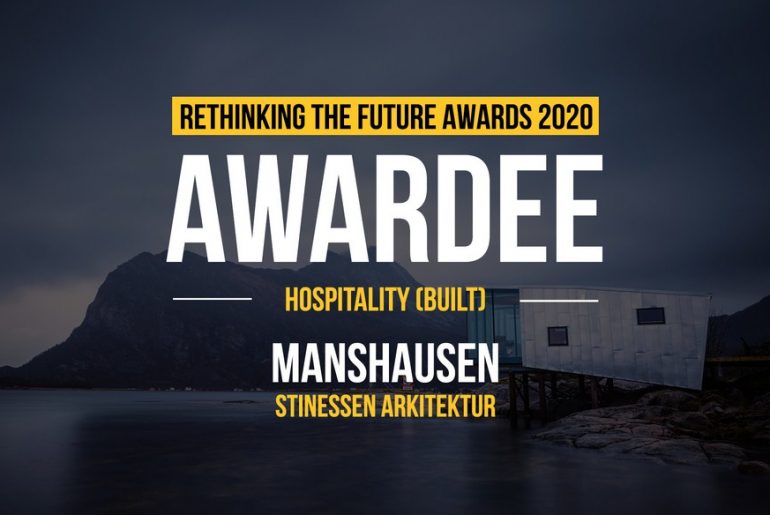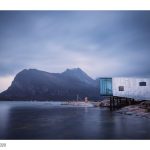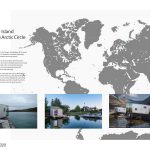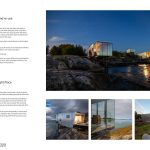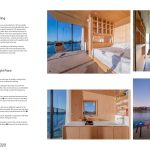Manshausen Island is situated in the Steigen Archipelago off the coast of Northern Norway and is home to the world´s largest population of Sea Eagles. The Island´s position between majestic mountains and the Barents Sea is in itself the inspiration for the design.
Rethinking The Future Awards 2020
Third Award | Hospitality (Built)
Project Name: Manshausen Island Resort
Studio Name: Stinessen Arkitektur
Design Team: Snorre Stinessen
Area: 7 x 33sqm
Year: 2015 and 2018
Location: Manshausen Island, Steigen, Norway
Consultants: Terje Indahl
Photography Credits: Siggen Stinessen, Steve King, Adrien Giret
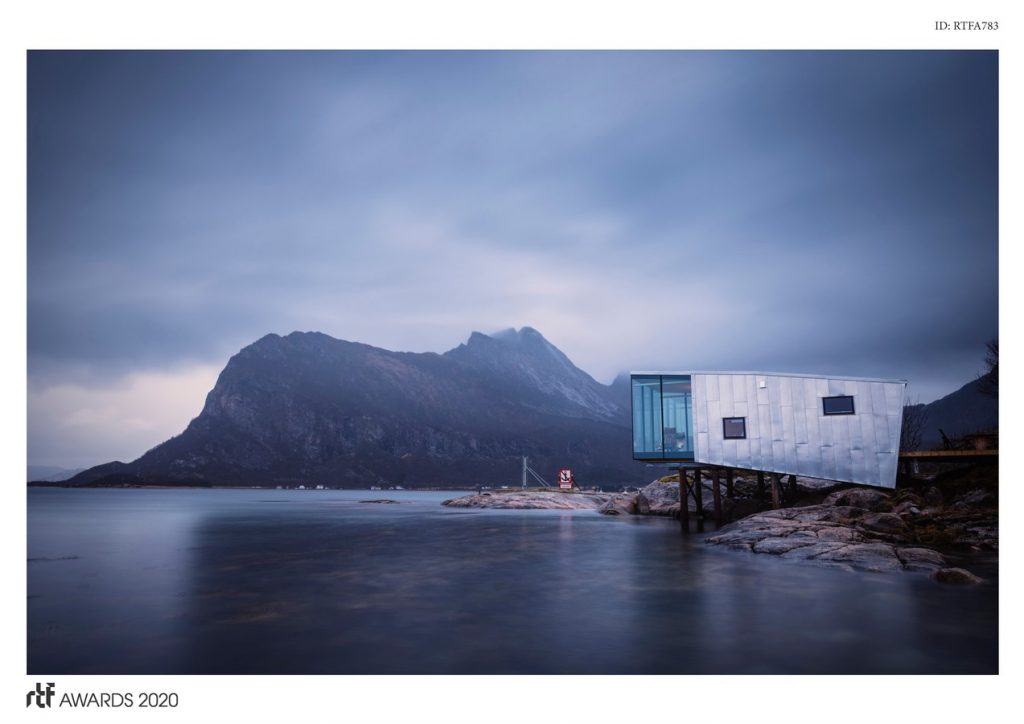
The Island was historically a trading post for the fishing industry, today only visible in the massive stone quays on the Island. Additionally, there is an existing 18th-century small farmhouse on the Island which was carefully restored and converted into a restaurant with the upstairs library.
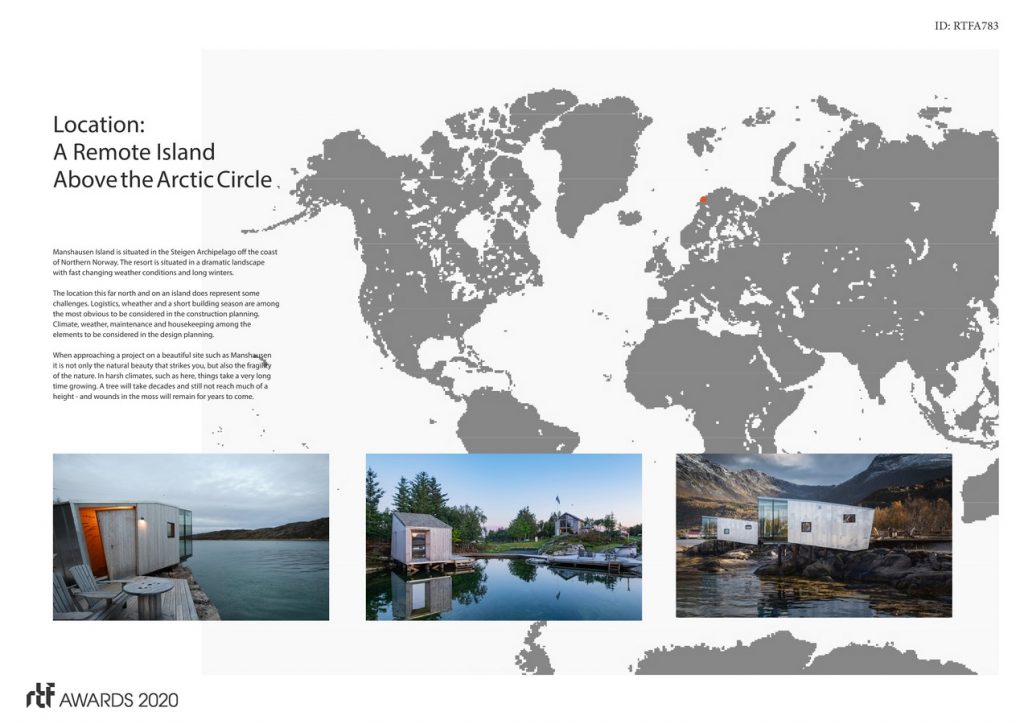
The guestrooms are organized as minimum footprint cabins that are designed to offer their guests an immersive exposure to nature and the natural elements while being comfortably sheltered. The positioning of each cabin on the island provide privacy and undisturbed sea views, but each individual position is also selected to ensure minimum impact on the existing vegetation. All details, including interiors and glazing, are custom designed. Wave heights, extreme weather conditions and also future rise in sea level were studied to determine the exact positions of the cabins. The exposure to the natural elements is extreme and act as an homage to the client who is a famous polar explorer.
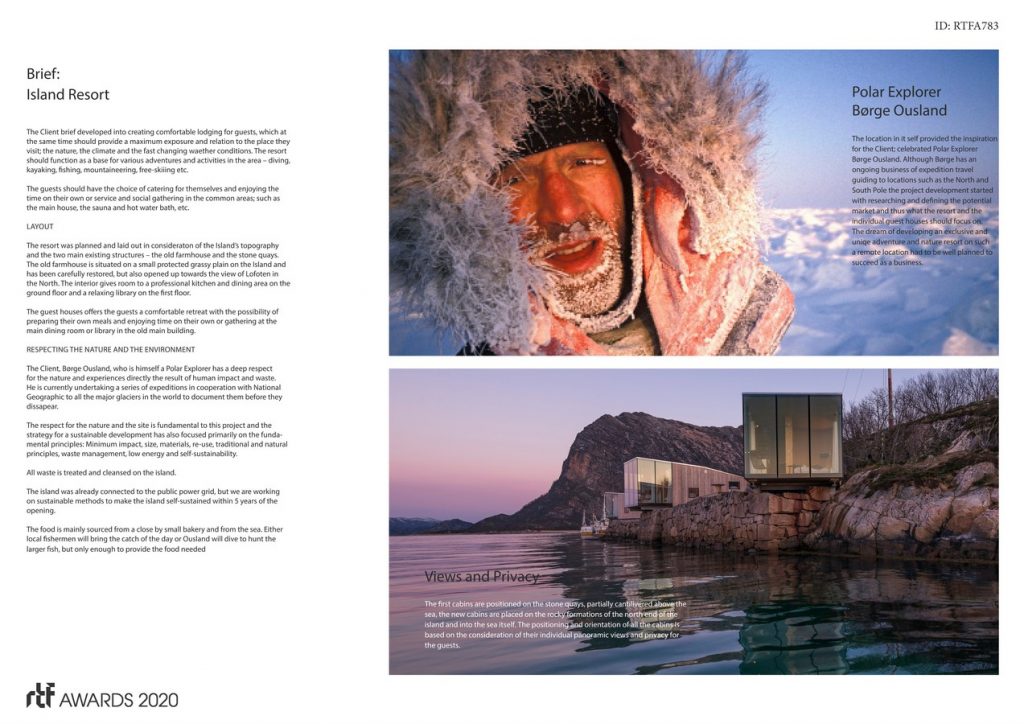
The original cabins rest on the existing stone quays and the new are positioned at the tip of the rock formations at the northern end of the island and out over the sea. Exterior cladding is custom made cross-laminated timber (CLT) for the first cabins that rest on an old stone quay, while the last addition of cabins are given aluminum sheet cladding as a response to the salinity and saltwater exposure as they are positioned in and just above the sea. The access to the cabins is via the rocky formations that allow you to step into and up out above the sea below. The shelter design endeavors to make a minimum environmental impact on the use of CLT. The cabins are designed to offer their guests shelter and comfort while at the same time underlining the dramatic experience of the elements outside; the sea, landscape, changing lights, weather and different seasons. Above all the cabins endeavor to fulfill the functional requirements of the guests, with ample space for luggage, a comfortable bathroom, and a kitchen/dining area. The cabins accommodate two to four people. The main bed is positioned in the main room, slightly withdrawn from the floor to ceiling glasses, to enable the visitor an around the clock experience of the outside elements, while still being comfortably sheltered.
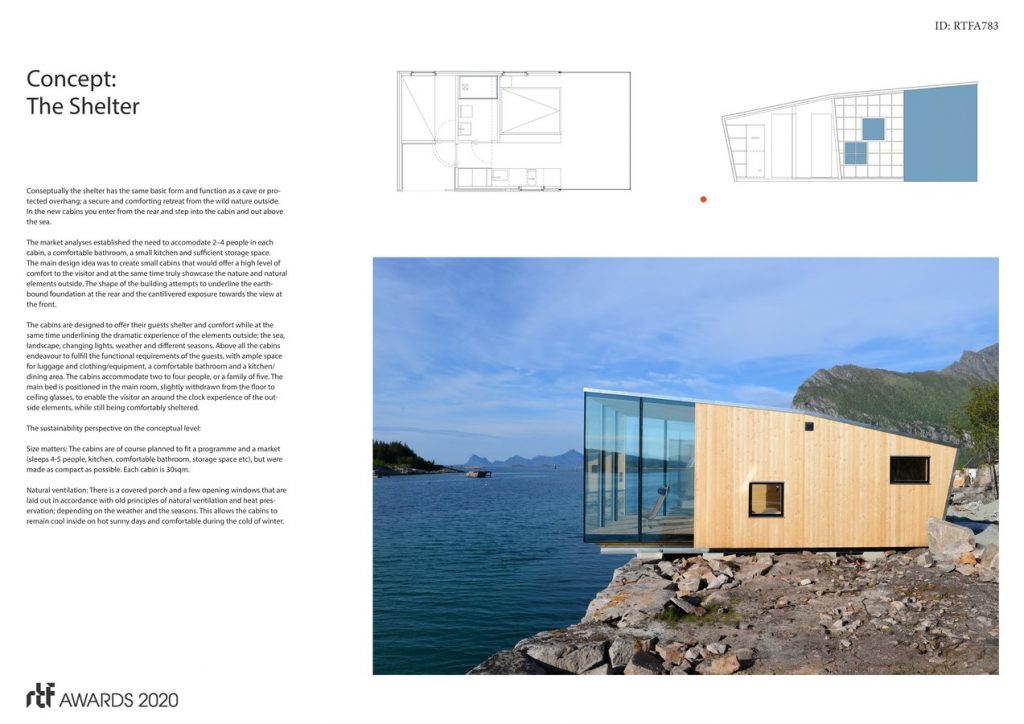
The sauna is made of left-over materials from the first stage of the building process and also old slate roof tiles found on the island. The design seeks to relate to the specific positioning in the pond, but also the surrounding landscape.
The restaurant kitchen grows its own produce and is focused on local food, virtually no waste is produced. The island and the surrounding ocean have been cleaned up and are certified plastic-free.
ARCHITECTURE, CONSTRUCTION & DESIGN AWARDS 2020 IS HERE
Over more than half a decade Rethinking the Future has been a leading organization committed to providing an international platform to not only recognize and acknowledge design talents from all over the world but also to celebrate and share the knowledge that created through a plethora of awards, events and academic dialogues in the field of architecture and design.

